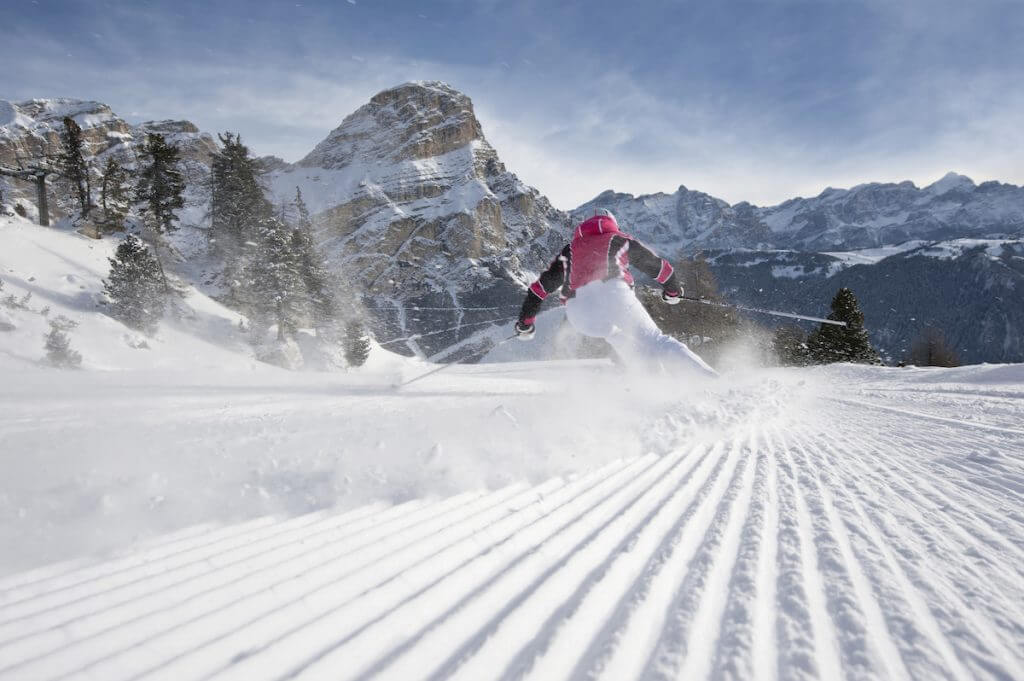Italy’s giant Dolomiti Superski area, which by some measures can be counted as the largest ski destination in the world, says that when making claims about their efforts on the environment, they need to be, “realistically sustainable.”
“To us, ‘realistic’ means acknowledging that all businesses have a carbon footprint, produce CO2. ‘Realistic’ also means that our commitment is tangible and transparent; it has nothing whatsoever to do with greenwashing. Gaining any old certification by paying to offset the emissions we produce and then wearing it as a badge of honour does not reflect our primary aim,” a spokesperson for the group said.
Dolomiti Superski’s huge ski area covers 3,000 square kilometres and spreads across the provinces of Bozen/Bolzano, Trento, and Belluno within the Dolomites, a UNESCO World Natural Heritage site, which are widely regarded as one of the world’s most beautiful and captivating mountain ranges.
The group operates 450 lifts operated by 130 different lift companies together offering 1,200 km of slopes across 16 ski resorts on one pass,
The bottom line in Dolomiti Superski’s positioning as ‘realistically sustainable’, the company says, is looking at every new investment to ensure it does not mean greater CO2 emissions, and instead reduces existing ones. They also look to reduce impacts of things that don’t impact climate changes so much – such as noise produced or visual impact.
They also note that much of what they were doing already is low impact.
New lifts are built with the aim of a better visual blend in the environment and avoiding cutting down trees as much as possible.
The vast majority of lifts are powered by hydroelectricity, produced locally in the mountains from numerous hydro-electric plants. In most cases it has not been a case of switching to green energy because of the climate emergency either, they’ve always received their power this way. Some ski resorts like San Martino actually produce much more green electricity than they use and export it to the grid.
In terms of the huge snowmaking arsenal of 6,000 snow guns that Dolomiti Superski uses to ensure all its slopes are open all winter long, the snow guns operate in accordance with nature and the water cycle. They collect water from springs and turn it into snow only when the temperature is appropriate. The snow melts in springtime and the cycle continues.
The group also argue that while ski lifts can be considered (“somewhat rashly”) a blight on the natural landscape, they can play a role beyond skiing in transporting people between towns and valleys, reducing the need to construct bigger roads, tunnels and reducing CO2 generating cars and commercial vehicles and cutting noise and air pollution.
Pointing to urban areas like Mexico City turning to lift manufacturers like Doppelmayr to build lifts to try to cut down on congested and polluted roads, they say the position in the mountains is not entirely dissimilar, if not on the same scale,
“Traffic along mountain roads is becoming increasingly problematic at certain times of year and in certain areas. Lifts can help ease the problem. They also allows people to access unrivalled natural beauty spots without creating noise, air and water pollution.”
In terms of slope preparation these are prepared with as few vehicles as possible, using satellite-linked software to avoid a vehicle preparing an area more than once, and checking the exact snow depth. The group is also moving on to electric-hybrid and hydrogen-powered groomers as fast as the technology allows.
“The Dolomites are the inspiration behind our approach: The natural heritage has allowed generations of people living in this region to remain and do business efficiently and effectively, avoiding the need to migrate to urban areas,” the spokesperson explained, adding, This close relationship with the mountains is handed down from generation to generation. It manifests as a deep respect and devotion to the area and a desire to appreciate and preserve it for future generations.”







